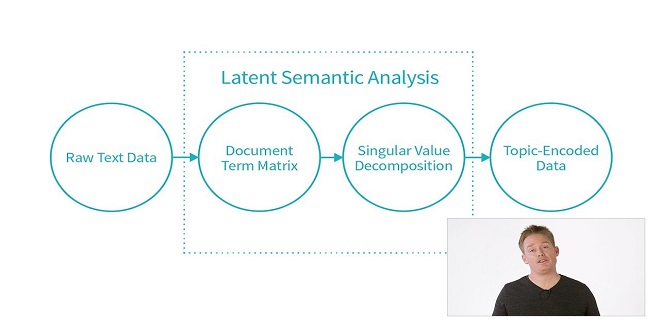Modeling the Customer’s Contextual Expectations Based on Latent Semantic Analysis Algorithms

Introduction
Nowadays, in the age of the Internet, access to open data detects the huge possibilities for information retrieval. More and more often we hear about the concept of open data which is unrestricted access, in addition to reuse and analysis by external institutions, organizations, and people. It’s such information that can be freely processed, add other data, and then published. More and more data are available in text format.
Algorithms of Latent Semantic Relations Analysis are one of the important tools for extraction and recognition of significant facts from textual data sets. Another aspect of research is to find ways and means of using the information obtained by Semantic tools applying in order to maximize the expected benefit. In this area, one of the modern tools for formulating the concept of benefits is the Benefits Language.
Related Research
Benefits language is a very well-known technique in door-to-door selling. It’s a technique that presents a product in a way that client would like to buy it. Benefits language is based on the F-A-B rule (Feature-Advantage-Benefit). It means that first are shown features of a product (color, material, shape, etc.) then advantages which are the result of those features and in the end – benefits. Benefits are profits that the customers will reach when they will buy and then will be using the product
The purpose of the Semantic Relationships Analysis is to extract the “semantic structure” of the collection of information flow and automatically expand term into the underlying topic. Significant progress on the problem of presenting and analyzing the data have been made by researchers in the field of information retrieval.
Novelty and Research Plan
With an aim to develop the system of customer’s contextual expectations the following scientific research question was raised: Is it possible to build the system of customer’s contextual expectations via systematic usage of Benefit’s Theory and Algorithms of Semantic Analysis of Textual Opinions? For finding the answers for this question the following main concepts were formulated:
Taking into account the specificity of chosen case study and due to the peculiarity of the requirements of film’s review writing, each paragraph of such document could be identified as an indivisible contextual unit, which is characterized by a particular Latent topic and should be analyzed separately.
Conclusions
In this paper, the authors contribute a new scientific approach for the system of customer contextual expectations building. Verifying the approach on the case study of Polish-language Film Reviews Corpus analysis helps to authors to find the answer to the main research question: the systematic usage of Benefit’s Theory and combination of the Algorithms of Semantic Analysis of Textual Opinions is the real scientific instrument of building the system of customer’s contextual expectations on the bases of textual opinions of open Internet pages’.
Prospects for future research in terms of the use of Semantic Analysis tools consist in the possibility of using the Concept of Benefits for a studied product to create a Methodology for: measuring the degree of positivity/negativity of the user’s opinions on the basis of an assessment of the measure of closeness of their opinions to ideal; recognizing the structure of the Customer’s expectations expressions formulations.




